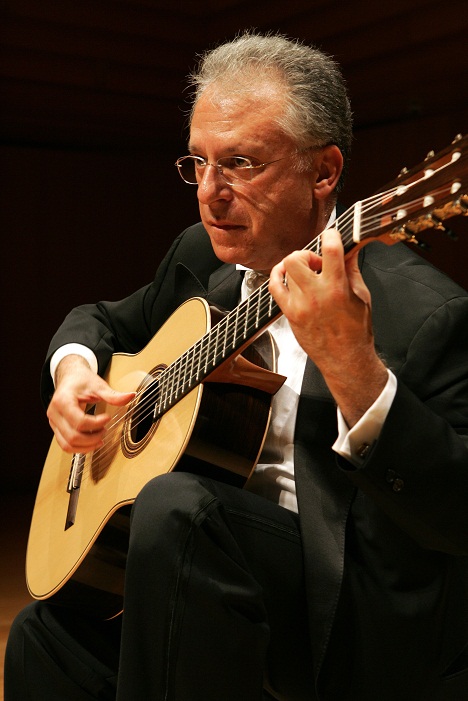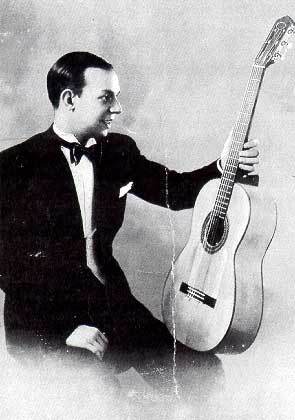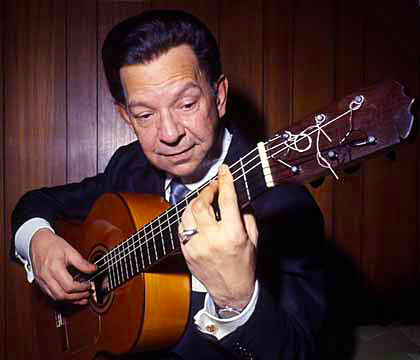<Back to Index>
- Guitarist Pepe Romero, 1944
- Guitarist Sabicas (Agustín Castellón Campos), 1912
PAGE SPONSOR

Pepe Romero (born March 8, 1944 in Málaga, Spain) is a world renowned classical and flamenco guitarist. He is particularly famous for his outstanding technique and colorful musical interpretations on the instrument.
As a soloist Pepe Romero has appeared in the United States, Canada, Europe, China, and many countries around the world with the Toronto, Philadelphia, Cleveland, Chicago, Houston, Pittsburgh, Boston, San Francisco and Dallas Symphony Orchestras, as well as with the Orpheus Chamber Orchestra, the New York, Bogota and Los Angeles Philharmonic Orchestras, the Boston Pops Orchestra, the Hong Kong Sinfonietta and the London Symphony Orchestra, the Academy of St. Martin - in - the - Fields, the Monte Carlo Philharmonic Orchestra, I Musici, the Zurich Chamber Orchestra, Philharmonia Hungarica, the Hungarian State Orchestra, the Spanish National Orchestra, the Spanish National Radio / Television Orchestra, L'Orchestre de la Suisse Romande, The New Moscow Chamber Orchestra, the Springfiled Orchestra, the Lausanne Chamber Orchestra, the American Sinfonietta and the Bournemouth Symphony. He has been a special guest at the festivals of Salzburg, Israel, Schleswig - Holstein, Menuhin, Osaka, Granada, Istanbul, Ravinia, Garden State, Hollywood Bowl, Blossom, Wolf Trap, Saratoga and Hong Kong.
Since his first recording (at the age of 15) he has recorded over 50 solo albums and 30 albums as part of the famed guitar quartet The Romeros. He has played for Presidents Carter and Nixon, the Queen of the Netherlands, the Prince of Wales and Pope John Paul II. He has numerous international recording awards to his credit and has received an Honorary Doctorate in Music from University of Victoria.
His contributions to the field of classical guitar have inspired a number of distinguished composers to write works specifically for him, including Joaquín Rodrigo, Federico Moreno Torroba, Rev. Francisco de Madina, Lorenzo Palomo, Michael Zearott, and Celedonio Romero.
Pepe Romero is the second son of Celedonio Romero, who was his only guitar teacher. His first professional appearance was in a shared concert with his father when Pepe was only seven years old. In 1957 Celedonio Romero left Franco's Spain for the United States with his family.
On February 11, 2000, King Juan Carlos I of Spain knighted Pepe Romero and his brothers, Celin and Ángel, into the Order of "Isabel la Catolica." The official ceremony of this high honor took place at the USC Thornton School of Music, and included a gala performance by The Romeros with the Thornton Chamber Orchestra. He is currently Adjunct Professor of Classical Guitar at the Thornton School, where he was named "Distinguished Artist in Residence" in 2004.
Although
originally a classical guitarist he is talented in Flamenco and a
popular Flamenco performer. His most famous Flamenco only album is
called ¡Flamenco Fenómeno!


Sabicas (Agustín Castellón Campos) was a Flamenco guitarist, of Romani origin, who was born in 1912 in Pamplona, Spain, and died in 14 April 1990 in New York.
Sabicas began playing guitar at the age of 4 and made his performing debut 2 years later. His early style was influenced by Ramón Montoya, with whom he was related on his mother's side of the family. Extensive collaboration with important cantaores (male Flamenco singers) of the period helped him develop his unique personal style.
Leaving Spain in 1936 during the Spanish Civil War, he went into exile in South America with bailaora (dancer) Carmen Amaya. The two toured together several times. Sabicas later settled in New York City in the United States. He did not return to his native Spain until 1967.
Sabicas was instrumental in the introduction of Flamenco to audiences outside of Spain and the Spanish speaking world. He was probably best known for his technical skills: blazingly fast picados (scales), fast arpeggios, quality composition for the many forms of flamenco, and infallible rhythm, which was critical if playing with a dancer. Also, he was considered to have perfect pitch. "The finest technique around has got to be Sabicas, the Flamenco player," famed guitarist Chet Atkins told Guitar Player Magazine in March 1972.
Sabicas was a tremendous genius of his day, not only with technique, but with major contributions, playing Flamenco previously unimaginable and giving new tools and possibilities for the solo instrument. He brought this art to concert halls and major theaters where all classes can enjoy.
Notable contemporary players such as Paco de Lucía, Tomatito, Serranito, Juan Manuel Cañizares, El Viejín, Vicente Amigo, Gerardo Nuñez and many more claim large influence from Sabicas' music.